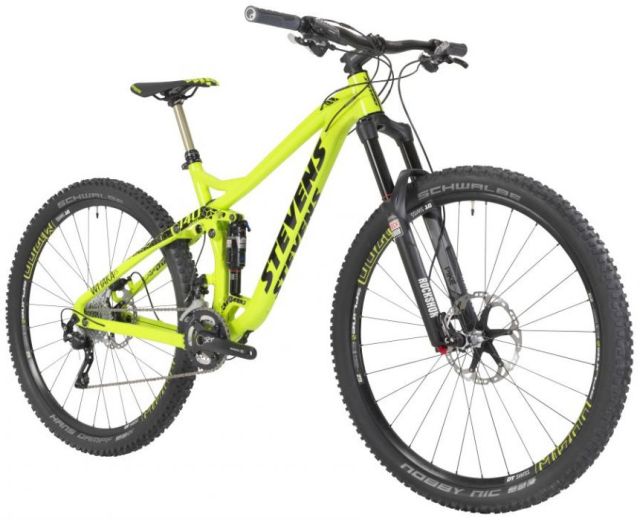It is quite strange ”that a trail needs to hail from (flat) Hamburg to show others what descending really means.” The STEVENS Whaka ES was by far the safest bike for descending, writes World of MTB Magazine.
The test riders had mastered trails with lots of switchbacks and tight patches very well with the STEVENS Whaka ES. This was supported by the bike’s geometry and specs, especially the Rock Shox Pike RCT3 suspension fork and the Monarch RT3 rear shock, which add safety. Both can be personalized in various settings.
Well tuned
World of MTB: ”Also, in our opinion STEVENS has made a great set-up. The initial reaction is sensitive, then the stanchion moves within the travel while not bottoming-out in every dent in the road so you can power easily over washboard sections.”
Despite 14.05kg (31lbs) in this category not being very light, the Whaka not only offers good descending capabilities but is also a quite remarkable climber. In addition to the good seating position the 2.35” wide tires - Hans Dampf front, Nobby Nic rear – deliver great traction, and the Whaka ES easily moves uphill. ”Good tires do not only perform great in the downhill.”
Nothing Left to Chance
Also with all the other specs STEVENS seems to have nothing left to chance, the editors said. The bike was specced with absolute top-shelf components: ”You can speak of a complete XT group, indeed. In addition to eye-catchers like rear derailleur and cranks, cassette, chain and shift levers, too are from Shimano’s all-time classic group.
It was also nice to see that the shift levers are attached to the brake levers via I-Spec bracket, therefore getting rid of any unnecessary clamps. This makes room for the lever of the Kind Shock LEV dropper post next to the Ergon grips. The dropper post also adds to safety.
There’s actually nothing much to say about the specs since – as you might expect – they work flawlessly and are easy to use.
Conclusion: ”Full throttle ahead”! The Whaka ES is by far the safest bike for descending. Stevens makes this happen with lots of travel and sturdy components, which results in a higher weight.”






